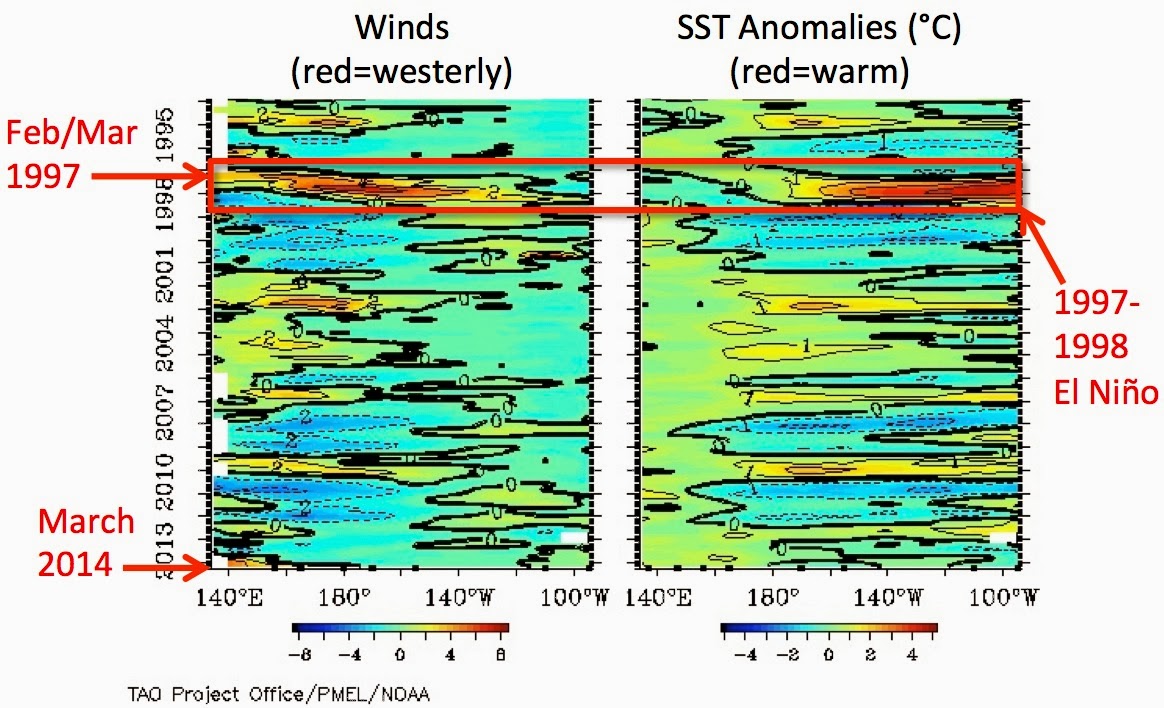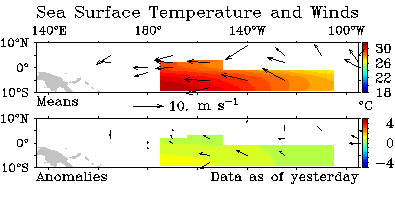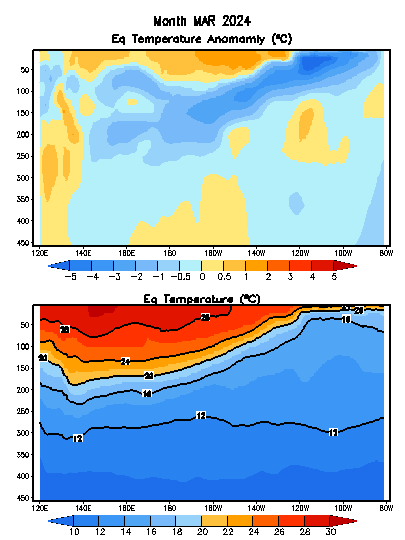Comment on Week in review by David L. Hagen
Comment on Week in review by David Wojick
Energy efficiency cannot replace energy use, so its benefits are limited. Excess efficiency is expensive hence wasteful (of money not energy). Every dollar spent for efficiency is a dollar not spent on something potentially more useful. Thus forced efficiency is a high regrets policy.
Comment on Cause of hiatus found deep in the Atlantic Ocean by David Wojick
Sorry I do not have time to read the 350 or so comments above, so this may have been addressed, but I am puzzled about this purported mechanism for removing heat from the atmosphere to create the so-called hiatus. The water sinks because it has cooled and become saltier, due to prolonged evaporation, which transfers heat to the atmosphere. It takes some heat down it it but releases a lot. If the sinking is increasing that should mean more heat is being released, not less. What am I missing?
Comment on JC interview with oilprice.com by rls
Stephen: Not all opinions are equal. I showed downthread that Frank’s opinion is illogical. It is based on disparent ideas that are figments of his imagination. His opinions are not what we should expect from s science professor and do not deserve academic equivalency to those of Dr Curry.
Comment on Week in review by Time For An Ob
Comment on JC interview with oilprice.com by rls
disparate ideas
Comment on Week in review by omanuel
Orach and Steven Goddard also have comments on this:
http://orach24463.wordpress.com/2014/08/23/nasa-erasing-the-arctic-past
Comment on JC interview with oilprice.com by Mike Edwards
It is interesting to note that the Ipsos MORI study was funded and backed by a department of the UK government. As a result, it is undoubtedly addressing an agenda set by that government department. This agenda may well have dictated the framing of the study – it has in past studies that I have seen.
As a result, I would be cautious in accepting its findings at face value.
Comment on JC interview with oilprice.com by jim2
Here are some more failed predictions. Ehrlich and his ilk like to predict all these shortages, then want the government to spend tons of money on their pet projects. Then, in a fairly short time, we find it was all BS from the get-go. In just a mere two years, look what happened to oil reserves. From the article (my emphasis):
Technically Recoverable Shale Oil and Shale Gas Resources: An Assessment of 137 Shale Formations in 41 Countries Outside the United States
Release date: June 10, 2013 Updated: June 13, 2013 Table 5 corrected
Executive summary
This report provides an initial assessment of shale oil resources and updates a prior assessment of shale gas resources issued in April 2011. It assesses 137 shale formations in 41 countries outside the United States, expanding on the 69 shale formations within 32 countries considered in the prior report. The earlier assessment, also prepared by Advanced Resources International (ARI), was released as part of a U.S. Energy Information Administration (EIA) report titled World Shale Gas Resources: An Initial Assessment of 14 Regions Outside the United States.1
There were two reasons for pursuing an updated assessment of shale resources so soon after the prior report. First, geologic research and well drilling results not available for use in the 2011 report allow for a more informed evaluation of the shale formations covered in that report as well as other shale formations that it did not assess. Second, while the 2011 report focused exclusively on natural gas, recent developments in the United States highlight the role of shale formations and other tight plays as sources of crude oil, lease condensates, and a variety of liquids processed from wet natural gas.
As shown in Table 1, estimates in the updated report taken in conjunction with EIA’s own assessment of resources within the United States indicate technically recoverable resources of 345 billion barrels of world shale oil resources and 7,299 trillion cubic feet of world shale gas resources. The new global shale gas resource estimate is 10 percent higher than the estimate in the 2011 report.
Table 1. Comparison of the 2011 and 2013 reports ARI report coverage 2011 Report 2013 Report
Number of countries 32 41
Number of basins 48 95
Number of formations 69 137
Technically recoverable resources, including U.S.
Shale gas (trillion cubic feet) 6,622 7,299
Shale / tight oil (billion barrels) 32 345
Note: The 2011 report did not include shale oil; however, the Annual Energy Outlook 2011 did (for only the U.S.) and is included here for completeness.
…
(end quote)
You can bet these numbers have increased, not fallen, in the last year.
Comment on JC interview with oilprice.com by jim2
Mann is more like an omega male.
Comment on JC interview with oilprice.com by Jim D
The advantage of a long phase-out is that young people will see mining as a dead-end career and get other skills instead. The phase-out also permits existing miners to work until retirement on smaller mines.
Comment on Week in review by Howard
http://www.eia.gov/forecasts/aeo/er/early_consumption.cfm
Industrial and transport make up more than 70% of energy consumption, so insulation might not be the lowest hanging fruit.
Comment on Week in review by Tonyb
Omanuel
It seems remarkable that we can forget the recent past so quickly. what hope is there therefore to put the modern age into its proper context with the climate of hundreds of years ago?
Tonyb
Comment on JC interview with oilprice.com by rls
Do they not believe on AGW or do they believe that many policies advocated by the wealthy and influential environmentalist lobby, such as keystone and EPA regs, are standing in the way of economic growth? Are they listening to the voters who rate climate dead last as an issue and employment and wages at the top?
Comment on Week in review by heymikey80
It seems to me both sides of global warming have their obscurantists, it is the magnitude that makes any difference. Koch, meet Soros.
Comment on JC interview with oilprice.com by jim2
I’m sorry, I forgot to add the link for the LCOE. Here it is:
Comment on JC interview with oilprice.com by Jim D
Matthew Marler, yes, the DDPP proposes practical methods for the major emitters to decrease fast enough to meet global emission budget targets such as those from the IPCC. Some of this involves BECCS technologies that can generate energy while also reducing CO2.
Comment on JC interview with oilprice.com by jim2
I can see how one might argue that hydro is dispatchable – at least to a point. It could be adjusted by adding or removing a whole generator I guess.
From that article:
…
A related factor is the capacity value, which depends on both the existing capacity mix and load characteristics in a region. Since load must be balanced on a continuous basis, units whose output can be varied to follow demand (dispatchable technologies) generally have more value to a system than less flexible units (non-dispatchable technologies), or those whose operation is tied to the availability of an intermittent resource. The LCOE values for dispatchable and nondispatchable technologies are listed separately in the tables, because caution should be used when comparing them to one another.
…
Comment on JC interview with oilprice.com by Rob Ellison
Adaptation and fast mitigation in ways that make sense – reducing methane, black carbon, tropospheric ozone, nitrous oxide, CFC’s. Restoring ecosystems and building carbon stores in agricultural soils. Without taxes and caps.
The obsession with carbon dioxide is a misguided and dangerous aberration.
Comment on Week in review by Howard
It’s not that simple. I agree that a top-down one-size-fits-all forced efficiency program would fail to achieve meaningful results. However, picking off the low-hanging fruit makes sense.
As an example, people (conservatives) have been freaking out over the past 20 years about forced water conservation via low-flow toilets, washing machines, dishwashers, showerheads, faucets, drip irrigation, etc.
In the current severe drought in California, we have more people and produce more crops using less water than during the 1976-77 severe drought. If water use efficiency was not implemented, the current severe drought would be a disaster.











